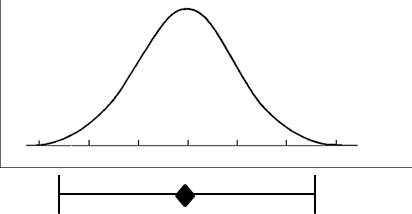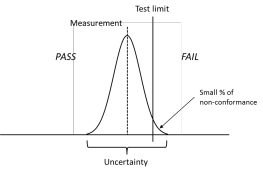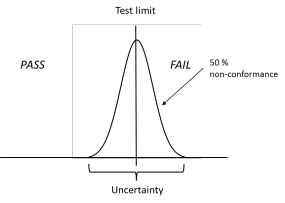How Accurate is Your Optical Loss Test Set?
December 1, 2016 / General, Installation and testing, Upgrading and troubleshooting, Best Practices
You have just made a loss measurement using an Optical Loss Test Set (OLTS). The measurement was made to a test limit, the result was a PASS, and the margin was provided. Have you ever thought about how much margin is acceptable?
Uncertainty of measurements has become a hot topic because, as in most short reach applications, the loss budgets are small. With any loss measurement, especially when testing to a limit, the predicted uncertainty around the loss measurement becomes important when margins are small.
For attenuation measurements, good practice is to have a reported loss value, with an associated uncertainty around the value, which is then compared to a fixed limit value. The difference between the loss value (plus uncertainty) and the test limit is called the margin, reported by the test equipment. If however, the reported PASS margin is small, the measurement uncertainty may come into play.
Four test cases having losses relative to a test limit are shown in Figure 1. For each test case, the diamond is the measurement while the band around it is the uncertainty, sometimes called an error bar.

| Case 1 | - | the measurement and uncertainty comply with the specification limit. |
| Case 2 | - | the measurement is in compliance but the uncertainty is not. |
| Case 3 | - | the measurement is not in compliance but the uncertainty may be (low probability). |
| Case 4 | - | the measurement and uncertainty are not in compliance. |
When a measurement gets close to the limit, things get “fuzzy”. In reality, the error bar is actually a bell curve as shown in Figure 2. A bell curve is a graph of a probability distribution. The measurement is given at the highest point on the curve

Another way to look at it is with the following two examples. In Figure 3, there is shown a measurement wherein the uncertainty “spills over” over the test limit. In this case, the probability of non-conformance is small, perhaps less than 5%.

In Figure 4, the measurement falls very near to the test limit. In this case, there is a 50% probability for conformance (PASS) and a 50% for non-conformance (FAIL). In other words, you have a 50/50 chance of failing (or passing).

Two international standards, ISO/IEC 14763-3 and IEC 61280-4-1, currently in revision, provide guidance on measurement uncertainty. Specifically, uncertainty values are provided based on installed cabling length, loss, and test method. Using these guidelines, you can have a high confidence level that the installed cabling will work. For example, in IEC 61280-4-1, the attenuation of multimode cabling installations, a table proposed for Edition 3 is shown in Table 1. Also included in Table 1 is the uncertainty for the channel test method defined in ISO/IEC 14763-3 for multimode installations. Note commas instead of periods are used for decimal separation in international standards.
|
Distance (km) |
Attenuation (dB) |
IEC 612804-1, MM-I cord |
IEC 612804-1, MM-2 cord |
IEC 61280-4-1, MM-3cord |
ISO/IEC 14763-3 MM Channel |
|---|---|---|---|---|---|
| 0,1 | 0,1 | 0,25 | 0,28 | 0,31 | 0,17 |
| 0,2 | 1,3 | 0,25 | 0,29 | 0,31 | 0,18 |
| 0,3 | 2,6 | 0,34 | 0,36 | 0,38 | 0,31 |
| 0,35 | 3,3 | 0,41 | 0,43 | 0,44 | 0,40 |
| 0,5 | 4,3 | 0,51 | 0,52 | 0,53 | 0,50 |
| 0,5 | 5,3 | 0,66 | 0,66 | 0,66 | 0,66 |
| 0,5 | 6,3 | 0,82 | 0,82 | 0,82 | 0,83 |
| 0,5 | 7,3 | 0,99 | 0,98 | 0,98 | 1,00 |
| 0,5 | 8,3 | 1,15 | 1,15 | 1,14 | 1,16 |
| 0,5 | 9,3 | 1,32 | 1,32 | 1,31 | 1,33 |
In summary, measurement uncertainty can be tricky. An attenuation measurement compared to a test limit has an associated margin. If the margin is small, the measurement uncertainty should be factored into the decision to accept a pass result. The international standards mentioned within will provide the necessary guidance for making that decision.




